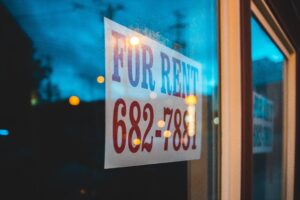Multi-Family Property Insurance for Landlords in New York City
Whether you’re a new landlord or a seasoned pro, owning a multi-family rental property in New York can be a rewarding and profitable investment. With high housing costs putting single-family homes out of reach for many New Yorkers, the investment value of multi-family rental properties has only increased.
However, to ensure that your investment is, in fact, profitable, you need to be prepared for the challenges that come along with it.
One of those challenges? Finding the right insurance policy for your multi-family rental property.
Multifamily properties have unique insurance needs that differ from standard property policies. This article covers everything you need to know to ensure that your multifamily rental property has the right insurance coverage.
What is a multi-family property and what kind of insurance does it need?
Broadly speaking, a multi-family property is any residential building that contains two or more separate housing units.
Here are some common examples of multi-family rental properties:
- Duplexes
- Triplexes
- Fourplexes
- Apartment buildings
While many types of buildings fall under the umbrella of “multi-family,” for insurance purposes, the specific type of coverage you’ll need for a multi-family property varies widely.
One of the biggest determining factors is how many units are in your building.
- For a multi-family rental property with only a few units, you need a policy that includes the entire property. That said, it’s important to note that if you’re renting out any part of your property to tenants, you will need a landlord insurance policy — even if you personally live on the property as well.
- For multi-family properties with more than four units, like a major apartment complex, you’ll need a comprehensive business insurance policy with tailored coverage for business-specific needs.
Before we delve into coverage options for multi-family property insurance, it’s important to clarify exactly which type of property this article is geared toward.
Here, we focus on insurance for landlords of smaller multi-family rental properties — those with around two to four units.
For information on insuring a larger multi-family property, check out our guide to apartment complex insurance in New York — or, simply reach out to us.
Key insurance coverages for multi-family rental properties
Again, insuring a multi-family property is a complex process with lots of nuance to consider. The best way to ensure your investment is fully protected is to work with an independent insurance broker you trust. They can help you understand your unique risks, compare different coverage options, and develop a custom insurance plan that offers the best possible coverage at the most competitive rates.
That said, here are some common coverages included in a landlord insurance policy for a multi-family rental:
Property insurance
This coverage pays for repairs or replacement of your property if it is damaged or destroyed by a covered peril, such as fire, smoke, storm, hail, or vandalism. For example, if a tenant starts a grease fire in their apartment and damages the kitchen, your insurance would cover the cost of repairing or replacing the damaged cabinets, appliances, and countertops.
Liability insurance
This protects you from financial liability if someone is injured on your property or sues you for negligence. For example, if a tenant slips and falls on your icy sidewalk, liability insurance could help cover their medical expenses and legal fees.
Depending on your unique circumstances and risk level, your insurance advisor may recommend additional liability coverage beyond the limits of your other insurance policies. This could come in the form of general liability insurance, an umbrella policy, or both.
Business income insurance
This type of insurance covers your lost rental income if your property becomes uninhabitable due to a covered peril.
For example, let’s say a hurricane causes extensive damage to the roof of your Brooklyn three-flat, rendering an entire unit uninhabitable. You’re forced to evacuate the tenant from their apartment as the roof is being repaired, which means you’re left without the rental income you rely on for several months. Business income insurance would provide coverage for your lost rental income until your tenant can move back in.
Flood insurance
Flood damage is not covered by standard landlord insurance policies (or any standard property insurance policy). In an area like New York, where floods can (and do!) destroy properties far outside of the areas FEMA designates as high-risk flood zones, flood insurance is a wise investment for any property owner.
Water or sewer backup coverage
This covers damage caused by water or sewer backing up into your property. Sewer backup insurance is technically optional, but it is highly recommended for landlords in New York City, where sewer backups are increasingly common and can be quite costly.
Equipment breakdown coverage
This covers the cost of repairing or replacing damaged equipment, such as appliances, HVAC systems, and electrical wiring. This type of coverage can be especially important for landlords with older properties.
Protecting your multi-family property in New York
From liability concerns to loss of rental income, the risks associated with owning a multi-family rental property in New York aren’t something to take lightly. With so much at stake, it’s important to have the right insurance coverage in place to protect your investment. An independent insurance broker can help you navigate the complex insurance landscape and find the best landlord insurance for your needs at the most competitive price.



